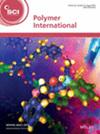Zahrah Faraj Omar Hunaydi, Noor Ayuni Ahmad Shafiai, Siti Noor Fazliah Mohd Noor, Zuratul Ain Abdul Hamid, Nawal Radhiah Abdul Rahman
求助PDF
{"title":"Characterization of novel miswak and bioactive glass composites in various ratios","authors":"Zahrah Faraj Omar Hunaydi, Noor Ayuni Ahmad Shafiai, Siti Noor Fazliah Mohd Noor, Zuratul Ain Abdul Hamid, Nawal Radhiah Abdul Rahman","doi":"10.1002/pi.6758","DOIUrl":null,"url":null,"abstract":"<p>The present study aims to formulate and characterize novel composite materials consisting of miswak (<i>Salvadora persica</i>) and bioactive glass (45S5 and 54S4P) in different ratios (25%–75%, 50%–50% and 75%–25%). Miswak sticks were dried, ground into a fine powder and blended with bioactive glass powder obtained through a melt-derived technique at 1400 °C. The resulting composites, designated M25BG45, M50BG45, M75BG45, M25BG54, M50BG54 and M75BG54, were compacted into pellets 1 mm thick weighing approximately 150 mg using a manual hydraulic press and then sintered at 200 °C. Comprehensive characterization was conducted using gas chromatography–mass spectrometry, field emission SEM (FESEM), XRD, X-ray fluorescence spectroscopy and Fourier transform infrared (FTIR) spectroscopy. FESEM showed a homogeneous distribution of miswak particles within the bioactive glass matrix. XRD confirmed the amorphous nature of the bioactive glass and the distinctive peaks of miswak. FTIR spectra revealed absorption bands corresponding to both miswak and bioactive glass. The structural assessment of these composites, incorporating varying proportions of miswak with bioactive glass types 45S5 and 54S4P, provides valuable contributions towards optimizing bioactivity and biocompatibility. These findings suggest potential applications of the innovative miswak–bioactive glass composite in oral and dental healthcare. © 2025 Society of Chemical Industry.</p>","PeriodicalId":20404,"journal":{"name":"Polymer International","volume":"74 8","pages":"676-687"},"PeriodicalIF":3.6000,"publicationDate":"2025-03-24","publicationTypes":"Journal Article","fieldsOfStudy":null,"isOpenAccess":false,"openAccessPdf":"","citationCount":"0","resultStr":null,"platform":"Semanticscholar","paperid":null,"PeriodicalName":"Polymer International","FirstCategoryId":"92","ListUrlMain":"https://scijournals.onlinelibrary.wiley.com/doi/10.1002/pi.6758","RegionNum":4,"RegionCategory":"化学","ArticlePicture":[],"TitleCN":null,"AbstractTextCN":null,"PMCID":null,"EPubDate":"","PubModel":"","JCR":"Q2","JCRName":"POLYMER SCIENCE","Score":null,"Total":0}
引用次数: 0
引用
批量引用
Abstract
The present study aims to formulate and characterize novel composite materials consisting of miswak (Salvadora persica ) and bioactive glass (45S5 and 54S4P) in different ratios (25%–75%, 50%–50% and 75%–25%). Miswak sticks were dried, ground into a fine powder and blended with bioactive glass powder obtained through a melt-derived technique at 1400 °C. The resulting composites, designated M25BG45, M50BG45, M75BG45, M25BG54, M50BG54 and M75BG54, were compacted into pellets 1 mm thick weighing approximately 150 mg using a manual hydraulic press and then sintered at 200 °C. Comprehensive characterization was conducted using gas chromatography–mass spectrometry, field emission SEM (FESEM), XRD, X-ray fluorescence spectroscopy and Fourier transform infrared (FTIR) spectroscopy. FESEM showed a homogeneous distribution of miswak particles within the bioactive glass matrix. XRD confirmed the amorphous nature of the bioactive glass and the distinctive peaks of miswak. FTIR spectra revealed absorption bands corresponding to both miswak and bioactive glass. The structural assessment of these composites, incorporating varying proportions of miswak with bioactive glass types 45S5 and 54S4P, provides valuable contributions towards optimizing bioactivity and biocompatibility. These findings suggest potential applications of the innovative miswak–bioactive glass composite in oral and dental healthcare. © 2025 Society of Chemical Industry.
不同比例的新型miswak和生物活性玻璃复合材料的表征
本研究旨在制备和表征由miswak (Salvadora persica)和生物活性玻璃(45S5和54S4P)按不同比例(25%-75%,50%-50%和75%-25%)组成的新型复合材料。Miswak棒干燥,磨成细粉,并与通过熔融衍生技术在1400°C下获得的生物活性玻璃粉混合。所得到的复合材料代号为M25BG45、M50BG45、M75BG45、M25BG54、M50BG54和M75BG54,使用手动液压机压实成1毫米厚、重约150毫克的颗粒,然后在200°C下烧结。采用气相色谱-质谱、场发射扫描电镜(FESEM)、XRD、x射线荧光光谱和傅里叶变换红外光谱(FTIR)对其进行了综合表征。FESEM显示,在生物活性玻璃基质中,错误粒子分布均匀。XRD证实了生物活性玻璃的无定形性质和独特的miswak峰。红外光谱显示了与误移和生物活性玻璃相对应的吸收带。这些复合材料的结构评估,包括不同比例的miswak与生物活性玻璃类型45S5和54S4P,为优化生物活性和生物相容性提供了有价值的贡献。这些发现提示了创新miswake -生物活性玻璃复合材料在口腔和牙科保健方面的潜在应用。©2025化学工业协会。
本文章由计算机程序翻译,如有差异,请以英文原文为准。





 求助内容:
求助内容: 应助结果提醒方式:
应助结果提醒方式:


